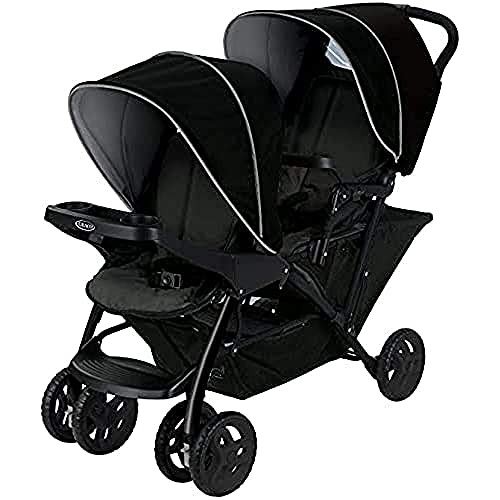20 Resources That Will Make You Better At Prams Pushchairs

Understanding Baby Prams and Pushchairs: A Comprehensive Guide
When it pertains to taking care of a newborn or an infant, few items are as vital as a reliable baby pram or pushchair. These mobility aids offer a safe, comfortable way to carry babies while permitting parents and caretakers the liberty to navigate the world. This article explores the various aspects of baby prams and pushchairs, assisting parents make informed decisions about which item may be best fit for their family's needs.
What Are Baby Prams and Pushchairs?
Baby Prams: These are typically designed for babies and very young babies. They have completely reclining seats that allow for a flat position, making them appropriate for newborns. Prams frequently feature a big, deep body, offering additional protection and comfort.
Pushchairs: Pushchairs, also referred to as strollers, are more flexible and can generally be changed for young children also. They are light-weight, simple to maneuver, and often include a range of seating positions, including reclined and upright.
| Feature | Baby Prams | Pushchairs |
|---|---|---|
| Appropriate Age | Newborn to around 6 months | Newborn to 3 years or more |
| Seat Position | Completely reclined | Adjustable (reclined and upright) |
| Weight | Heavier, more robust | Lighter, more compact |
| Folding Mechanism | More complex folding | Normally easier folding |
| Maneuverability | Can be less maneuverable | Highly maneuverable |
Key Features to Consider
When picking a baby pram or pushchair, prospective buyers should think about a number of essential features that can influence the usability and comfort for both the child and the caregiver.
1. Safety Features
- Five-point Harness: Ensures the baby is securely strapped in.
- Brakes: Reliable braking systems avoid accidents.
- Stability: A broad base and sound frame enhance stability.
2. Comfort
- Cushioning: Ample padding on the seat ensures comfort.
- Suspension System: Provides a smoother trip on irregular surfaces.
- Canopy: A big, adjustable canopy protects the baby from sun and rain.
3. Portability
- Weight: Lighter models are simpler to lift and bring.
- Folding Mechanism: Easy folding designs permit fast storage and transportation.
- Compact Size: A more compact size makes it easier to fit into cars and truck boots and tight areas.
4. Versatility
- Convertible Options: Some models can be changed from a pram to a pushchair.
- Reversible Seat: Allows the baby to face the parent or the world, depending on choice.
- Devices: Look for alternatives that can accommodate car seats or have a storage basket.
5. Toughness
- Material Quality: Invest in higher-end materials for longevity.
- Weather Resistance: Water-resistant fabrics make sure that the pram/pushchair can stand up to different weather.
Kinds Of Baby Prams and Pushchairs
A number of types of baby prams and pushchairs meet various function requirements, lining up with moms and dads' particular lifestyles.
1. Travel Systems
Travel systems generally combine a safety seat and a stroller in one plan, permitting seamless transportation from vehicle to pram or pushchair without interrupting the baby.
2. Umbrella Strollers
Umbrella strollers are lightweight and convenient, created for easier maneuverability. They are perfect for quick trips and might do not have some functions found in full-size strollers.
3. All-Terrain Pushchairs
These are perfect for active households who enjoy treking or taking strolls on rugged terrains. They typically include larger wheels for stability.
4. Jogging Strollers
Jogging strollers are designed for moms and dads who wish to integrate workout with childcare. They include durable frames and repaired front wheels to improve safety throughout a run.
The Importance of Choosing the Right Option
Picking the proper baby pram or pushchair is not simply a matter of preference; it directly affects the safety and comfort of the baby. Furthermore, the ideal choice can profoundly influence the way of life of the caregivers.
Benefits:
- Convenience: A well-chosen pram or pushchair makes getaways much easier and more satisfying.
- Health: Proper support assists in back and skeletal development in babies.
- Bonding: Outdoors play a critical role in parent-child bonding.
Often Asked Questions (FAQs)
1. At what age can my baby utilize a pushchair?
The majority of pushchairs are developed to accommodate infants as young as 6 months, although some models can be gotten used to securely transport newborns when used with compatible vehicle seats.
2. How do I maintain my baby pram or pushchair?
Regular cleaning is necessary. Clean down the frame and fabric with a wet cloth and mild soap. Occasionally inspect the wheels and brakes for wear and tear.
3. Can I use a baby pram for jogging?
Typically, no. Routine baby prams do not have the stability and style required for running. It is more secure to utilize a stroller specifically created for that function.
4. How do I choose the best size?
Consider how often you will be utilizing the pram/pushchair and where. If Best Prams UK is limited, search for a more compact style. For outdoor experiences, choose one with bigger wheels and good suspension.
Baby prams and pushchairs are vital tools for moms and dads and caregivers, allowing safe and comfortable transport of babies and toddlers. By understanding the various features, types, and benefits involved, caregivers can pick the best mobility aid fit to their requirements. Whether it be an advanced travel system or a simple umbrella stroller, the ideal purchase can significantly boost the experience of parenthood, making getaways enjoyable and stress-free for both parents and babies alike.

